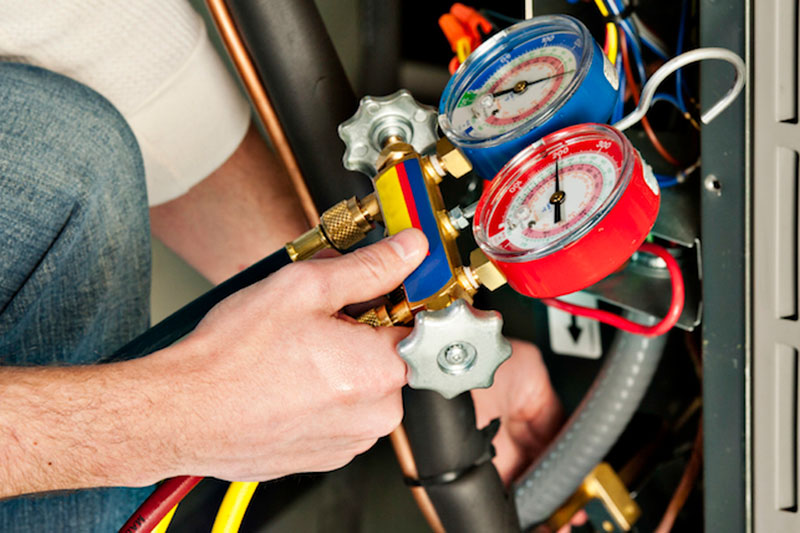
You might not think often about how your air conditioner functions, but it requires refrigerant to keep your home cool. This refrigerant is subject to environmental regulation, because of the chemicals it contains.
Depending on when your air conditioner was put in, it may require R-22, R-410A or R-32 refrigerant. We’ll go over the differences and which air conditioner refrigerants are being phased out in York, as well as how these phaseouts affect you.
What’s R-22 and Why Is It No Longer Being Made?
If your air conditioner was installed before 2010, it probably uses Freon®. You can find out if your air conditioner has it by reaching us at 717-383-4479. You can also examine the name plate on your air conditioner condenser, which is situated outside your residence. This sticker will include info on what model of refrigerant your AC uses.
Freon, which is also called R-22, includes chlorine. Scientists consider Freon to be harmful to the earth’s ozone layer and one that results in global warming. The Environmental Protection Agency, which governs refrigerants in the United States, outlawed its creation and import in January 2020.
Should I Replace My R-22 Air Conditioner?
It depends. If your air conditioning is operating as designed, you can continue to use it. With yearly air conditioner maintenance, you can expect your system to run around 15–20 years. However, the Department of Energy says that replacing a 10-year-old air conditioner could save you 20–40% on summertime cooling expenses!
If you don’t replace your air conditioner, it can cause difficulties if you require air conditioning repair down the road, specifically for refrigerant. Repairs may be more expensive, as only limited quantities of recycled and reclaimed R-22 is on hand.
With the end of R-22, a lot of new air conditioners now use Puron®. Also called R-410A, this refrigerant was made to keep the ozone layer strong. As it requires an incompatible pressure level, it isn’t compatible with air conditioners that use R-22 for cooling.
However, Puron still has the likelihood to contribute to global warming. Because of that, it may also eventually be ended. Although it hasn’t been mandated yet for residential air conditioners, it’s likely sometime this decade.
What Refrigerant Will Take the Place of R-410A?
In preparation of the end, some manufacturers have begun using R-32 in new air conditioners. This refrigerant ranks low for global warming likelihood—approximately one-third less than R-410A. And it also lowers energy use by about 10%, according to the Intergovernmental Panel on Climate Change’s Fourth Assessment Report. That’s savings that might be sent on to you through your energy bills.
Strine's Can Provide Support with All Your Air Conditioning Needs
In summary, the alterations to air conditioner refrigerant probably won’t impact you very much until you have to have repairs. But as we discussed earlier, repairs connected to refrigerant may be more costly since there are the low amounts available.
In addition to that, your air conditioner frequently stops working at the worst time, often on the muggiest day when we’re experiencing a lot of other appointments for AC repair.
If your air conditioner relies on a phased out refrigerant or is aging, we advise getting a modern, energy-efficient air conditioner. This ensures a hassle-free summer and can even decrease your cooling expenses, especially if you choose an ENERGY STAR®-rated air conditioner. Plus, Strine's has many financing solutions to make your new air conditioner work with your budget. Contact us at 717-383-4479 to get started right away with a free estimate.
